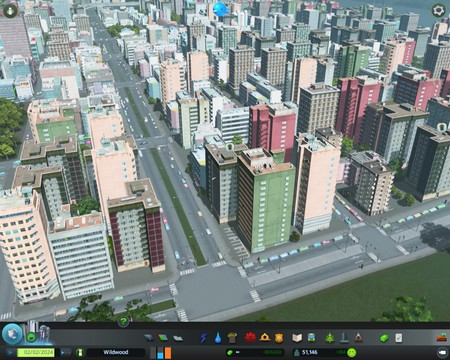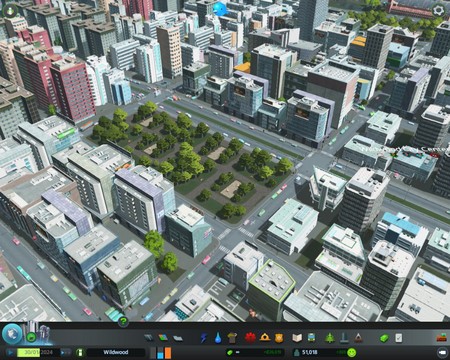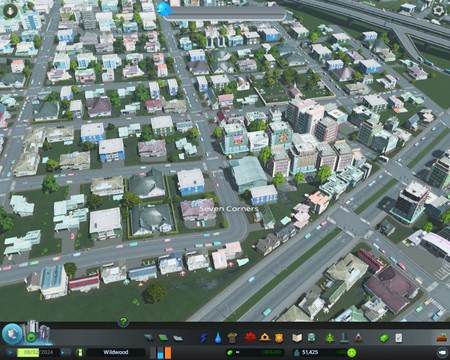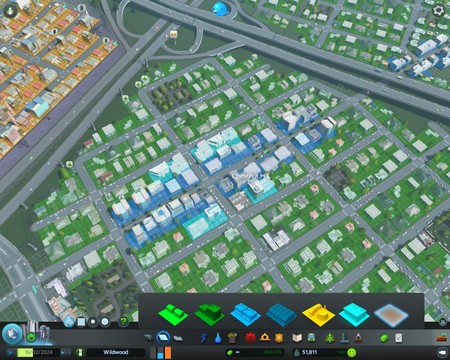Cities Skylines takes over SimCity’s mantle as top city-builder
Those of you who’ve dreamed of having their own city to build from the ground up now have a new virtual way to make it happen: A computer game called Cities: Skylines.
Like in the popular SimCity franchise, the player acts as the mayor, responsible for building the infrastructure needed for the city to work. That includes building streets, a power grid, parks, schools, public safety, and zoning land for development.
As your city reaches population milestones, additional features are unlocked. These, in turn, make it possible for your city to continue to grow.
Skylines comes from the team responsible for the well-received transit simulation games Cities in Motion and Cities in Motion 2. With Cities: Skylines, they’ve taken the step up from transportation simulation to full city-builder.
After the disappointing release of SimCity 5 in 2013, this game is a welcome improvement in the genre.
Like SimCity 5, roads are no longer bound to a strict 90-degree grid. Players can build curved roads or grids that are skewed at different angles, which helps give cities a more realistic appearance.
On the other hand, one big change from SimCity 5 is the ability to draw bus lines and build subways and commuter rail. In the most recent SimCity, players could place bus stops, but buses just drove randomly to stops based on where the most people aboard wanted to go.
In Cities: Skylines, players can draw actual bus and rail lines. Buses will actually follow the lines you draw, and stop where you designate stops. One limitation, though, is that while you can set overall service levels for all buses throughout the city, you can’t add additional service to any one line.
Another important change from SimCity 5 is that in Skylines, the subway is back. Many SimCity players were disappointed when SC5 came out without the ability to build subways. But Skylines does have subway stations and players can draw subway services just like bus and commuter rail lines.
Like other city-builders, Skylines includes zones. In addition to the traditional SimCity set of residential, commercial, and industrial zones, Skylines has added an office zone to the mix, which allows you to provide jobs for educated workers.
The residential and commercial zones have a low-density and a high-density variant.
Unfortunately, like the city-builders that have come before, Skylines does not have a mixed-use zone. While most cities in the real world have residential or office over retail, Skylines (and SimCity) still only recognize single-use zones.
However, it is possible to create mixed-use districts. When I build a neighborhood, I invariably put a commercial zone in the center, surrounded by residential. If demand warrants, I’ll sometimes sprinkle office in as well.
That sort of development pattern does make a difference, because the sims in the game will walk or take transit when that’s the best mode, and will drive when things are too far.
Of course, even when you try to build suburban-style development with far-separated uses, the buildings in the game are largely urban-format, with facades built right up to the sidewalk. You won’t see a sea of parking surrounding big-box retail uses. That’s not part of the simulation.
Unlike SimCity 4 and 5, Skylines does not feature a region mode. Each map has just one city. However, a key improvement is that mayors can “annex” land as their city grows.
Many players of SimCity 5 were disappointed that each city was in a little pod off a freeway, with no ability to draw connections across the city limits. In Skylines, your city will start off about the same size as one of SimCity 5’s individual cities.
But as your city reaches population thresholds, you can add adjacent tiles, and you can build connections across the (former) boundary. If you don’t like the freeway connecting your pod to the outside world, you can annex that territory and rebuild it to suit your fancy.
You can’t annex unlimited land, though. You can only add eight or nine additional squares to your city. But your city can be shaped oddly to take advantage of natural features or resources.
I think one of the coolest features is the ability to paint and name districts. The simplest use for this feature is just to name neighborhoods.
But there’s actually more functionality than that. The player can actually define policies for each district. For example, you might make transit free in the Downtown district. Or you could ban high-rises in leafy Chestnut Hill. Or if you want to incentivize small businesses in LoDo, you can give them tax breaks.
Another use for districts is to allow industry specialization. If you have an oil field under part of your city, you can paint a district which will focus oil-specialized industries. But if you don’t do that, your industries will just import the resources they need.
One very cool feature, which has been carried forward from the Cities in Motion franchise, is the ability to follow sims around. And these sims are semi-permanent features of your city. As long as you don’t demolish their residence, once they move in, you can follow them forever. They’ll go to school or find work. They’ll shop and recreate.
Following them around may help you figure out how to improve the transportation network. Or it may just give you a sense of the complexity of the simulation. You can also rename them if you want. Almost everything in the game can be renamed.
This contrasts very sharply to SimCity 5, where the sims are not permanent. In that game, the sims will leave work and go to the first unoccupied residence. And then they’ll cease to exist. Until the next day when they go to the closest available job (which may not be the same as the day before).
Of course, managing public services is an important part of the mayor’s job. Making sure that there are enough classrooms in the school district is something common to most city-builders. Skylines is no different.
The game does have one drawback over SC5, though. In the most recent SimCity, you could expand most public facilities. For example, you might build an addition onto a school.
In Skylines, you cannot do that. You just have to build a new facility to meet the demand.
Also like in the new SimCity, Skylines has great data visualization tools. The screenshot above shows fire protection coverage. The individual fire stations are shown in light purple, and every building is colored based on its fire risk.
If only it was this easy to see data in real life!
There are two additional features that really put this game head and shoulders above the SimCity franchise.
The first is the ability to make your own maps through a map editor. The editor is extremely detailed, especially with regard to mapping water, which really acts like a fluid. This is important, since hydro power in the game depends on the strength and volume of water.
The other feature is that the game is set up for modding and asset creation. I haven’t attempted to do any of this myself, but I have downloaded several mods and assets (buildings, parks, interchanges, and the like). But in the two weeks since the game’s release, there are already thousands of user-created mods and assets available for download.
Many of us were disappointed at the rollout of SimCity 5, not only because it was plagued with problems, but because the actual gameplay seemed like a setback from SimCity 4.
Cities: Skylines, on the other hand, is a worthy heir to the title. If you were disappointed in SimCity 5, you will probably find Skylines very satisfying.










